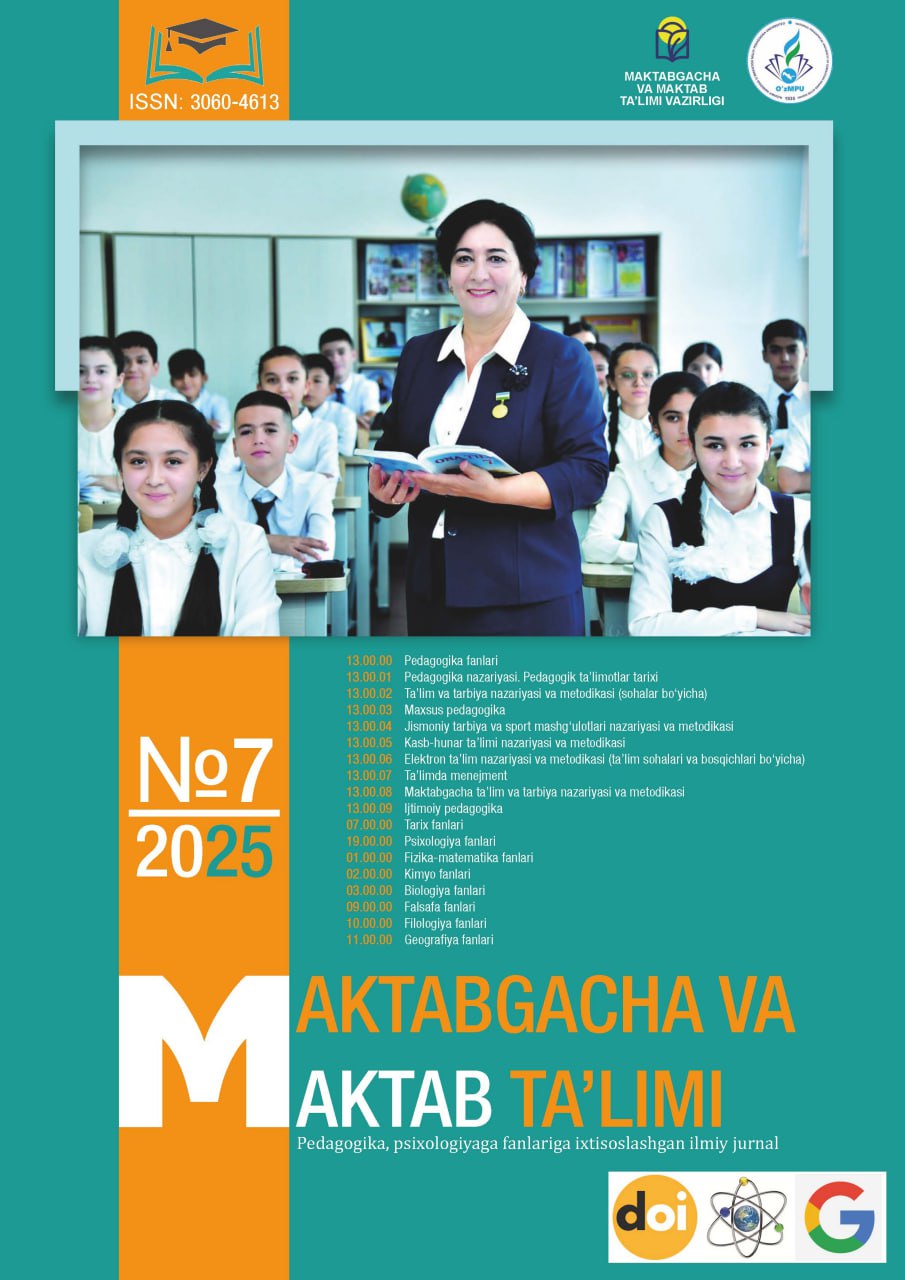The Content of Developing Students’ Communicative Culture Through a Bilingual Approach
DOI:
https://doi.org/10.5281/zenodo.15860558Ключевые слова:
bilingual approach, communicative culture, intercultural communication, interactive learning, bilingual education.Аннотация
This article examines the theoretical and practical foundations of developing students’ communicative culture
through a bilingual approach. It evaluates the role of bilingualism in education, highlights its importance in shaping intercultural
communication skills, and presents effective methods for improving students’ communicative competence using
both native and foreign languages
Библиографические ссылки
Bialystok, E. (2011). Reshaping the Mind: The benefits of bilingualism. Canadian Journal of Experimental Psychology.
Cummins, J. (2000). Language, Power, and Pedagogy: Bilingual children in the crossfire. Multilingual Matters.
Decree of the President of the Republic of Uzbekistan, May 19, 2021, No. PQ-5117, On Improving Foreign Language
Teaching.
Nazarova, G. A. (2020). Bilingualism and Its Potential in the Learning Process. Tashkent: Fan Publishing.
Crystal, D. (2003). English as a Global Language. Cambridge University Press.
Muminova, M. A. (2021). Methods of developing communicative culture in foreign language education. Young
Researcher Journal.
Richards, J. C., & Rodgers, T. S. (2001). Approaches and methods in language teaching. Cambridge University Press.
Vygotsky, L. S. (1978). Mind in Society: The development of higher psychological processes. Harvard University Press.
Загрузки
Опубликован
Выпуск
Раздел
Лицензия
Copyright (c) 2025 MAKTABGACHA VA MAKTAB TA’LIMI JURNALI

Это произведение доступно по лицензии Creative Commons «Attribution» («Атрибуция») 4.0 Всемирная.

